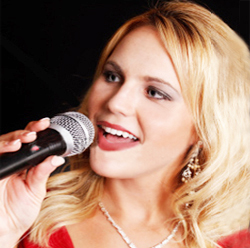Churches aren’t packed with angelic voices, at least from an audio engineer’s perspective.
Instead, there’s a variety of vocal talent; from the first-timer to the experienced singer and if one’s lucky, a trained singer.
But the real problem isn’t the talent level, it’s what they’re tasked to do.
A common production phrase says the quality of the mix depends on the quality of sound coming from the stage. It’s for this reason microphone selection and usage is of critical importance. But today, we’re going past the mic and past the talent to the real source of mixing difficulty: poor song arrangement.
Home On The Range
Some vocals are hard to mix because the vocalist is asked to sing outside their range. The term range refers to the full spectrum of notes a singer’s voice is able to clearly produce, starting from the bottom-most note (lowest pitches) and reaching to the upper-most note (the highest pitches).
People cannot all sing in the same range. Untrained singers have a limited range compared to trained singers who can rely on technique and vocal exercise to extend that range. For some, their full range is a few octaves while for others, their range spans four-plus octaves.
Given any time a pitch cannot be carried by the singer then it’s considered out of their range, look at how many times untrained church singers are singing out of their range. Just listen for it.
Singing outside of the range creates a rather unattractive sound. And when a song arrangement includes octaves outside a singer’s range, it’s time to start the vocal EQ process from scratch.
No matter how perfect the vocalist settings are on an in-range song, when anything else comes along, the EQ settings need to go out the window.
General EQ
Take for example a male voice. My generic male vocal mix build goes as follows. I hit the HPF (high-pass filter) and roll it to around 100 Hz. Later, I’ll tweak to the optimal setting. Next, I use a low-end cut in the 250-350 Hz range to clear up muddiness common with male vocals. Lastly, I remove the primary offending frequencies.
That three-step process works on analog and digital consoles. The only limitations now are what else I can do given technological limits.
Start Over
Back to the vocalist’s range. The above process works but the moment a song requires them to sing out of their range, it’s time to start over.
The offending frequencies will be in a new place, the HPF point might be different, and certainly the later extra EQ work will be in different areas.
The vocalist should own the frequency band in which they’re singing and when they start singing at an extreme, that frequency area will change and the rest of the mix needs to be adjusted. Don’t have other dominate sounds fighting for that space.
Engineer Kim Lajoie says of lead vocal mixing, “Make sure it sounds exactly how it needs to, and then bring the other instruments back in around the vocal. The vocal is the most important part of the mix and the song – don’t compromise it by jamming it into a sans-vocal mix.”
A lead vocalist may not be the worship leader and therefore, expect times for this to happen whereas the worship leader has a handle on their own voice. But what about times when it’s a backing vocalist? Use the same process but if it still doesn’t produce a usable sound then tuck the voice behind the others.
There’s no such thing as a perfect vocal EQ setting that works all the time. What works today might not work tomorrow. What works for one song might not be right for the next and that’s even when it’s within range as a song arrangement can call for effect changes and vocal EQ changes. But when a song arrangement requires a vocalist to sing outside their range, it’s time to start their vocal mix from scratch.
Ready to learn and laugh? Chris Huff writes about the world of church audio at Behind The Mixer. He covers everything from audio fundamentals to dealing with musicians. He can even tell you the signs the sound guy is having a mental breakdown.





















